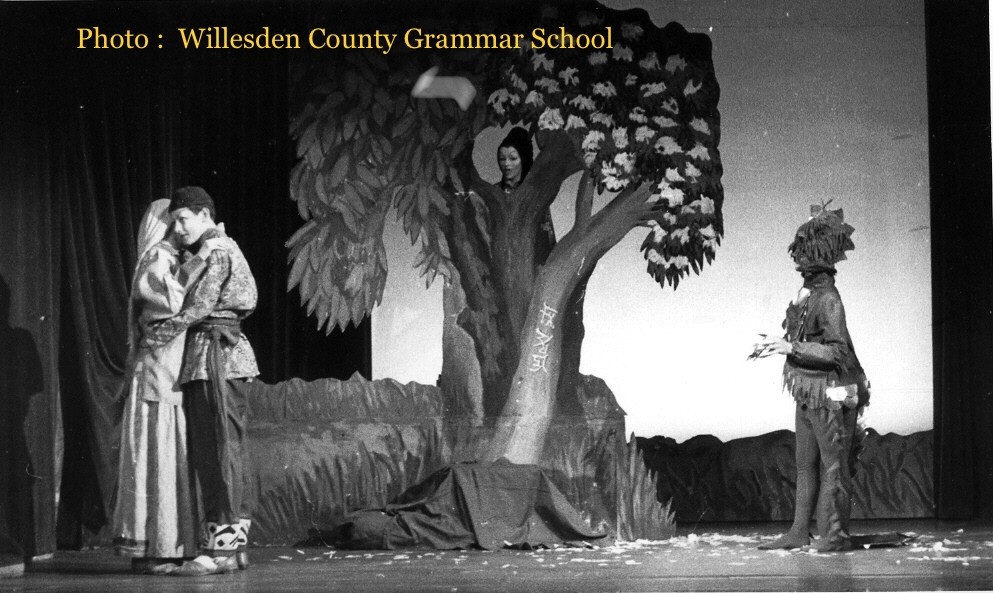The Confutation of Widsom
The Confutation of Wisdom
This one act play seems to have been popular in the 1930s; The Stage newspaper printed a calendar of productions and performers and on 4th April 1936 it lists Irene Mawer as being a member of the costume design team for a production of The Confutation of Wisdom. It doesn’t state who the players were, or where it was performed (The London Stage 1930-1939: A Calendar of Productions and Performers in J P Wearing, Performing Arts, 2014) However, we can make a guess as there is a newspaper clipping which reads:
“…a matinee, Saturday afternoon, at the Vaudeville Theatre on the Strand, West End. Irene Mawer played Noah in her version of The Flood…Following the biblical story came more light-hearted mime pieces including ‘Sandwiches in a Museum’ and ‘The Little Man’ by Elinor Shan and also included ‘Scenes from Spoken Comedies – The Confutation of Wisdom, a Chinese play by F Sladen Smith.” (The Stage, London 18 June 1936) There isn’t too much information easily available on the web about the playwright, so all I really know is that his first name was Francis, and his dates were 1886-1995.
In an article un-related to Ginner-Mawer, we can see that the play was also performed in a girls’ school in Walthamstow in 1936. It was noted to be an ‘unusual’ play, but the date re-enforces its popularity around that time:
“The Walthamstow High School Magazine December 1936. The Prize-Giving was held on Saturday, September 19th, in the Greek Theatre. The weather was exceptionally kind to us, the sun shone throughout and even the wind absented itself so that no voices were carried away. First of all, the Sixth Form presented, “The Confutation of Wisdom,” by F Sladen-smith. This was an unusual little play, written in the Chinese manner.“
But, what is a ‘Chinese play’? I don’t know, and I don’t know what would have been meant by it in the 1930s. However, Wikipedia states that traditionally, Chinese theatre was generally in the form of Chinese opera, that is, musical in nature. Neither of the news cuttings hold references to musicality, so perhaps the information from Britannica might be more fitting, in that they tell us that there are three types of Chinese plays: military, domestic and satire of officialdom, each establishing role types. This doesn’t really answer my question as to what is a Chinese play, but very luckily Willesdon County Grammar School produced this play in 1964 and have reproduced the write-up of it in the school magazine from that year.
The characters are the Ancient, the Girl, the Boy, the Spirit of Wisdom, the Mother, the Father, and the Dragon; and the play is described as being a light-hearted sketch:
“The story of the play: the desire of two young Chinese people to marry each other in spite of the protestations of their parents, and their encounter with the Spirit of Wisdom, was typical of the legendary picture of China. A lack of scenery, except for the very real ‘tree’ which housed the Spirit, was in keeping with this…This is essentially a stylised, formal work, to be played with dignity.” (Willesden School Magazine, 1964, pp.30,31)
I was driven to the dictionary to find out the meaning of confutation, and was not happy with the common reply along the lines of ‘something that is confuted’. Not helpful. Eventually, I came to the conclusion that to confute means to refute; or to prove wrong; or to bring to naught; or to set aside. It normally applies to a person or to an argument. It is impossible to guess a how it is used in the play, but no doubt it was quite a clever scenario. With her eye for detail and her flair for design, I am sure that Miss Mawer would have done an excellent job of creating suitable Chinese costumes.

